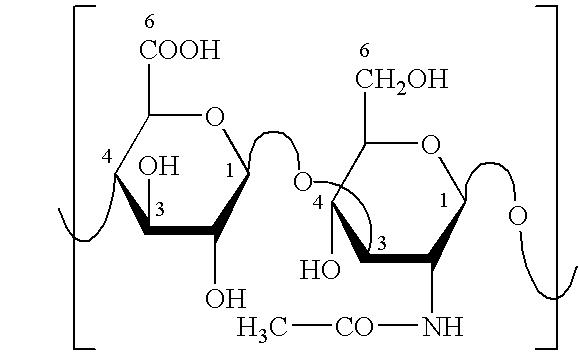Coating system for implants for increasing tissue compatibility
a tissue compatibility and coating technology, applied in the field of coating systems to increase the tissue compatibility of implants, can solve the problems of reducing the functionality of implants and the success of treatment healing, the coating achieved does not achieve sufficient adhesion strength on the substrate surface, and the cost of implementation is high, so as to achieve effective prevention or at least strong reduction of tissue irritation, improve tissue compatibility, and improve the effect of tissue compatibility
- Summary
- Abstract
- Description
- Claims
- Application Information
AI Technical Summary
Benefits of technology
Problems solved by technology
Method used
Image
Examples
exemplary embodiment 1
Chitosan as a Partial Layer
[0039] The following method descriptions are particularly suitable for manufacturing a coating system according to the present invention on stents or stimulation electrodes.
[0040] The implant surface was previously cleaned, degreased, and stirred lightly for 10 minutes at room temperature in a 0.5 to 2% acetic acid solution having a chitosan concentration between 0.1% and 0.5%. The molecular weight of the chitosan was between 100,000 g / mole and 1,000,000 g / mole. The implant was subsequently removed and dried.
[0041] Alternatively, a thin layer made of chitosan may be applied to the implant through spraying. For this purpose, a 0.5% chitosan solution in 0.5% acetic acid was used. The previously cleaned implants were sprayed 5 to 20 times at intervals of 15 to 30 seconds for 0.5 to 1.0 seconds with the aid of an airbrush gun, the implants being dried at 40° C. to 70° C. between the spraying steps. The applied layers have a layer thickness of 1 μm to 10 μm....
exemplary embodiment 2
Chitosan as an Additive
[0045] In addition to the polyanions hyaluronic acid and / or its hyaluronic acid derivatives, the coating system also contains the polycationic chitosan. A further functional group for the cross-linking agent glutaraldehyde is also provided by the amine of the chitosan. The aldehyde function may react both with the amine function of the chitosan and also with the carbonyl and / or hydroxyl function of the hyaluronic acid. The degree of cross-linking may be increased further and the ionic interaction between the polyanions and polycations may be additionally reinforced through these reactions. The layered system made of polyanions and polycations may be produced through alternating spraying of the implant with solutions of desired concentrations of chitosan, hyaluronic acid, and hyaluronic acid derivatives.
[0046] For this purpose, previously cleaned implants are alternately sprayed with an aqueous solution of hyaluronic acid or hyaluronic acid derivatives and ch...
examples 1 through 8
Experiments on the Swelling Behavior
[0050] The method according to Example 1 was divided into the following steps:
(a) preparing a 1% hyaluronic acid solution;
(b) pouring 3 ml 1% hyaluronic acid solution into Petri dishes having 4 cm diameter and subsequent drying;
(c) adding 4 ml cross-linking agent solution to the films at room temperature (20° C.), the cross-linking agent solution comprising 240 ml acetone, 80 ml 25% glutaraldehyde solution, and 1.6 ml 3 molar hydrochloric acid;
(d) cross-linking duration 20 hours, the cross-linking agent solution having been replaced after 4 hours;
(e) removal and washing with deionized water;
(f) adding 4 ml 2.2% NaBH3CN solution;
(g) washing with deionized water;
(h) drying.
[0051] The further Examples 2 through 8 deviated as follows, with otherwise identical method control:
[0052] In Example 2, the cross-linking duration in step (d) was 4 hours without replacement of the cross-linking agent solution.
[0053] In Example 3, the cross-l...
PUM
| Property | Measurement | Unit |
|---|---|---|
| thick | aaaaa | aaaaa |
| molecular weight | aaaaa | aaaaa |
| molecular weight | aaaaa | aaaaa |
Abstract
Description
Claims
Application Information
 Login to View More
Login to View More - R&D
- Intellectual Property
- Life Sciences
- Materials
- Tech Scout
- Unparalleled Data Quality
- Higher Quality Content
- 60% Fewer Hallucinations
Browse by: Latest US Patents, China's latest patents, Technical Efficacy Thesaurus, Application Domain, Technology Topic, Popular Technical Reports.
© 2025 PatSnap. All rights reserved.Legal|Privacy policy|Modern Slavery Act Transparency Statement|Sitemap|About US| Contact US: help@patsnap.com

